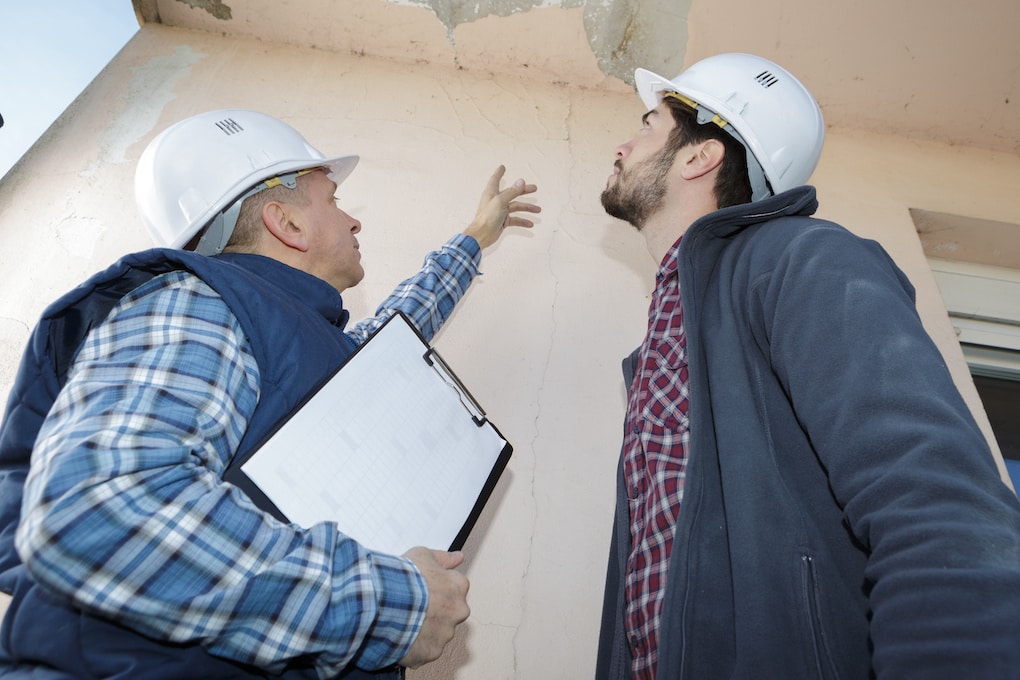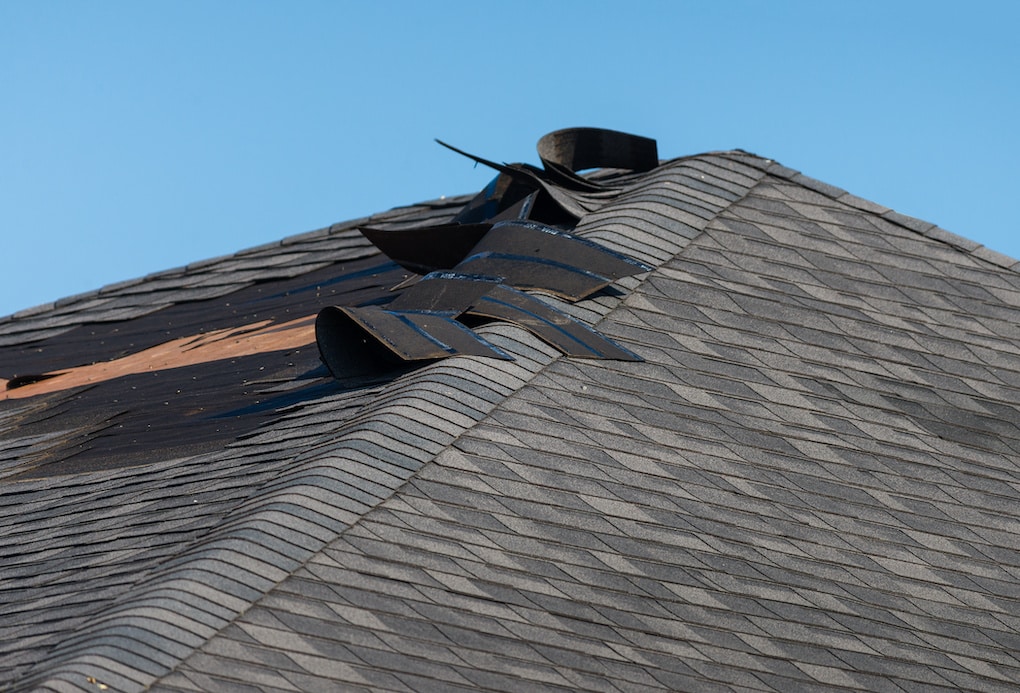When you least expect it, storms and natural disasters can cause damage to your roof, leaving you wondering what to do next. First, know that you need to act fast to get your roof repaired to mitigate further damage. However, filing an insurance claim for a new roof isn’t always easy, and you might face some hurdles. Luckily, this guide will tell you everything you need to know about when and how to file an insurance claim for your roof successfully.
When Is It Appropriate to File a Roof Insurance Claim?
When your roof sustains damage due to hail, wind storms, or a natural disaster, you must file an insurance claim through your homeowner’s insurance policy. Even if the damage isn’t extensive enough for you to notice it right away, filing a roof insurance claim is important because it’ll protect all the other parts of your roof.
If you don’t file a roof claim, the exposed parts could be damaged even further by weather conditions and eventually lead to water damage throughout your property.
You should also consider filing an insurance claim if:
- Your roof is leaking or showing signs of leakage such as puddles on the attic floor or wet spots on the ceiling after it rains.
- Your roof is showing signs of rot, rust, or deterioration.
- You notice discoloration on your roof.
- Your shingles have dents or spots on them (a sign of hail damage).
- You have damage to your gutters, vents, or other roofing elements.
- There is large debris like branches or trees on your roof.
- You notice curled, cracked, or loose shingles.
- Shingles are missing or have been lifted from strong winds.

When Should I Contact an Insurance Company?
Once you know for sure that you want to file a roof insurance claim, the next step is deciding if it’s time to contact your insurer after discovering roof damage or waiting until the damage worsens.
In general, it’s best to contact your insurance company as soon as possible after a storm or natural disaster. That way, they’ll have an accurate record of when the damage occurred and can send out an adjuster sooner. If you wait too long, the adjuster might not be able to come out.
You should also get an inspection before starting your claim or do them simultaneously. Sometimes if you notice debris on the roof or other signs of storm damage, it doesn’t necessarily mean your roof was damaged. But these can indicate you need a thorough inspection to note and pinpoint any damage right away.

What Does an Insurance Claim Cover (Or Not Cover)?
Sometimes you can file an insurance claim for old damage, depending on a few factors. But insurance claims may not always cover certain things, so arming yourself with the proper knowledge before you set yourself up for disappointment can be vital to ensure you get coverage.
A standard homeowner’s insurance claim will often cover the following:
- Structural damage to your home due to fire, hurricane, lightning, & hail
- Personal belongings up to 50% of their value (more can be added)
- Liability insurance for personal or bodily injury on your property
- Unexpected additional living expenses if you can’t stay in your home due to damage or repairs. It would cover hotels, restaurants, and other additional living expenses (ALE) during that time.
- Fire damage
A standard homeowner’s insurance claim will often NOT cover the following:
- Structural damage caused by a flood, earthquake, or regular wear and tear
- Issues due to neglect or failure to maintain your property
- Valuable property such as jewelry, firearms, gold (this should get additional coverage)
- Damage caused by war or nuclear hazards
- Power outages
- Water damage
- Failed DIY repairs or other human-error
Add-On Coverage Options
You can add coverages to your standard policy if you want or need additional coverage. For example, people living in a floodplain area or near a fault line will want to add earthquake or flood protection to their plan. Some states make flood insurance mandatory. You can sometimes waive it with a LOMA (letter of map amendment).
Other necessary add-ons to insurance could be:
- Insurance for expensive belongings
- Additional liability insurance
- Siding and roof restoration insurance
- Sewer and drain-line coverage (covers damage from backups or clogs)
- Underground service lines (gas, sewer, electrical)

Things to Think About Before Filing an Insurance Claim
Before you take the first steps towards filing your insurance claim, take a moment to go over these considerations that can make it more complicated to file or would end up denied.
How Many Claims Have You Filed Previously?
We want to start by saying you should absolutely file an insurance claim if you experience extensive damage from a storm or natural disaster. It will significantly reduce the amount you need to pay for repairs or even rebuilds.
However, if you have filed two or more claims in the last few years, you might be looking at a significant increase in your insurance premiums. So be mindful of when and why you file claims to ensure you don’t face higher premiums or get denied down the road.
Are You Certain You Have Damage?
To piggyback off of filing too many claims, to avoid doing that, make sure you have damage before filing a claim. One way to do this is to know the signs of roof damage, and another is to get a free no-obligation inspection from a reputable contractor. You can get the damage assessed before you even file your claim or get an inspection from an insurance adjuster.

How Old Is Your Roof?
As we noted above, your homeowner’s insurance will not cover anything that is caused by routine wear and tear. Sometimes this wear and tear looks like storm damage or is the reason you have a leak from a rainstorm—because your old roof just can’t stand up to the elements.
If your roof is super old or is nearing the end of its expected lifespan, your chances of getting repairs covered by insurance might be slim to none. But if storm damage is extensive and you have to get it replaced right away, you might have more luck. Also, it’s important to note that insurance won’t cover a new roof just because it’s now old and worn out.
When Did You Notice the Damage?
Time is of the essence when filing an insurance claim. The longer you wait, the more damage can occur, and the more complicated inspections and insurance claims can be. You may get your claim denied if you ignored damage that led to more water leaks or issues—which will likely not be covered because it falls under neglect in your insurance policy. So the second you notice damage or the day after a storm rolls through, act fast to get your claim filed and inspection scheduled.

What Is Your Insurance Deductible?
If you have a high deductible and aren’t prepared for paying even that, you should discuss financing options with your contractor or insurance company. Any roof repair or replacement can be a financial burden to anyone, especially those not expecting such a cost. So, know you have options and avoid any surprises.
To File or Not to File—That Is the Question
Now that we’ve covered the bases of what an insurance claim will or will not cover, you have a few options and a big decision to make.
To recap, if you have roof damage, your roof is old or nearing the end of its lifespan, or you’ve filed multiple claims in a short period—you might want to think about not filing an insurance claim. If that’s the case for you, there are other ways to get repairs covered at little cost to yourself.
If you’re not going to file a claim, consider the following:
- Financing options through your contractor or personal loans
- Think about upgrading your roof and making an investment in your home
- Save up and take your time to replace your roof, making temporary repairs in the meantime
- Minor repairs can be fixed on your own
- Get an inspection and estimate to plan for your future roof replacement
But overall, we highly recommend filing an insurance claim if this is your first experience with roof damage, your roof is well within its life expectancy, the damage was severe, and you plan to be in your home for a long time.
5 Tips for Getting Your Insurance Claim Approved
Now that you know you’re going to file, we have a few tips for making sure your claim gets approved, and you get the coverage you need to fix or replace your roof. Some things are apparent, and others, not so much. But here are some ways to successfully file a roof claim.
1 – Thoroughly review your insurance policy.
Understanding your insurance policy is vital to know what will be covered, which coverage is limited, and what deductible you’ll pay, plus other details. The fine print can mess with your roof claim if you aren’t aware of it to begin with. Make sure you read your policy front to back and note any issues or questions you have before you tackle your claim filing.

2 – Do your own damage assessment.
If you suspect roof damage from a storm, inspect your entire home, not just the roof. Take photos and make notes of any potential damage. Then, when you contact your insurer to file the claim, you’ll have a more accurate scope of the damages and knowledge to offer before it’s ever inspected.
3 – Act fast.
The longer a roof sits with damage, the less noticeable the damage looks and starts to look like regular wear and tear. This can be detrimental to your claim getting approved.
4 – Get an estimate.
Don’t only rely on the adjuster to determine the repair cost of the roof; consider getting a no-obligation estimate or inspection from a reputable contractor as well.

5 – Keep a record of every interaction.
Avoid any issues down the road by keeping track of any emails, phone calls, and all correspondence regarding your claim until all the work is done. You can cover your bases by keeping records from the start regarding who you talked to, what they said, and anything they promised.
What Happens Next?
Congratulations! Your insurance claim has been approved. So, now what happens?
You can now get your roofing work done by a reputable contractor like Apple Roofing. Our team has the experience needed to navigate an insurance claim, assess the damage, and fix just what needs to be fixed. We’ll ensure you get your roof and home back to working order as fast as possible, so you don’t have to worry.
For more information on claims, estimates, inspections, and roof replacement in general, reach out to Apple Roofing today.

